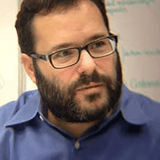Summary
How do we advance design maturity in the enterprise space, particularly in the B-to-B space where we often struggle to distinguish between the buyer’s and the user’s needs? What doesn't cut it: traditional capability maturity models, created through massive surveys to determine the organizational characteristics that contribute to business success. After more than two years of the collective traumas and personal emergencies caused by a pandemic, a racial reckoning, and other existential crises, designers are deeply tired, worn out, and looking to work in organizations that are "mature", where their contributions are understood and supported. You need to forge your own definition of design maturity, based on understanding and care for the people in your design team, the specifics of your organization, and the state of UX as a profession. With this deep understanding you can start the experiments and gain support for initiatives to increase the impact of design in your organization.
Key Insights
-
•
Design maturity models from consultants may not fit every organization's unique needs after major disruptions like a pandemic.
-
•
Creating a custom design maturity definition rooted in team context and aspirations leads to greater clarity and actionable direction.
-
•
Design maturity should measure value not only to business and customers but also to design team members and society.
-
•
Pandemic and social justice challenges heightened awareness of care, safety, and belonging within design teams.
-
•
Researchers and some designers often feel overlooked or excluded in early project conversations, impacting their effectiveness.
-
•
Large design teams need tailored mechanisms, such as pausing team-wide critiques, to build psychological safety.
-
•
Empathy towards functional partners who may not understand design’s role is key to integrating design into business.
-
•
Design maturity evolves as business purposes evolve, including sustainability and inclusiveness goals.
-
•
Quantitative survey assessments can miss uneven distribution of design maturity across teams and roles.
-
•
Transparent communication and storytelling within the design organization foster shared understanding and morale.
Notable Quotes
"We were looking at all of these carefully color-coded and labeled sticky notes and I could feel this perplexity, frustration, and fatigue wafting off of us."
"They told me how researchers feel like second-class citizens, having to invite themselves to meetings just for others to see their face."
"Design maturity is not just about delivering value to the business or customers; it has to be about delivering value to the team members, too."
"During the pandemic, we got used to awkward, uncomfortable conversations about colleagues' personal challenges and experiences."
"Design leaders need to use their powers of empathy to see things from their functional partners’ point of view."
"At first, there was a feeling of 'we already know our model,' but then we realized we needed to discover our why by listening closely to the team."
"We paused team-wide design critiques because our team members needed a sense of safety they didn’t yet have."
"Business is just people, and from their point of view, they often don’t understand how design helps them accomplish their goals."
"Design maturity results from the behaviors and structures we put in place that enable us to deliver greater value to customers, business, ourselves, and society."
"When design fits into business, it aligns the whole organization towards strategic ends rather than being just a craft."
Or choose a question:
















More Videos

"Don't be cool, be good—work hard at managing your teams because they need you to nail it."
Adam Cutler Karen Pascoe Ian Swinson Susan WorthmanDiscussion
June 8, 2016

"Many product managers got their roles because they know the business or subject matter, but they don’t know how to manage product development."
Peter MerholzThe Trials and Tribulations of Directors of UX (Videoconference)
July 13, 2023

"Governance frameworks can facilitate whatever an organization wants to do, fast or slow, loose or tight."
Lisa WelchmanCleaning Up Our Mess: Digital Governance for Designers
June 14, 2018

"Investing in sustainability today will yield dividends for future generations."
Vincent BrathwaiteOpener: Past, Present, and Future—Closing the Racial Divide in Design Teams
October 22, 2020

"Growth and learning is your long term change management plan."
Brenna FallonLearning Over Outcomes
October 24, 2019

"Thick data is the opposite of big data; it’s stories, qualitative, and crucial during moments of rapid change."
Tricia WangSpatial Collapse: Designing for Emergent Culture
January 8, 2024

"Clusters describing demographics and behaviors alone were not enough; we needed emotional personas to find value propositions."
Edgar Anzaldua MorenoUsing Research to Determine Unique Value Proposition
March 11, 2021
"We want to build teams with diverse skill sets so we can create a full picture during the knowledge creation phase."
Designing Systems at Scale
November 7, 2018

"Design is the rendering of intent — bringing ideas into a form people can interact with to solve problems, as Jared Spool said."
Erin WeigelGet Your Whole Team Testing to Design for Impact
July 24, 2024
















